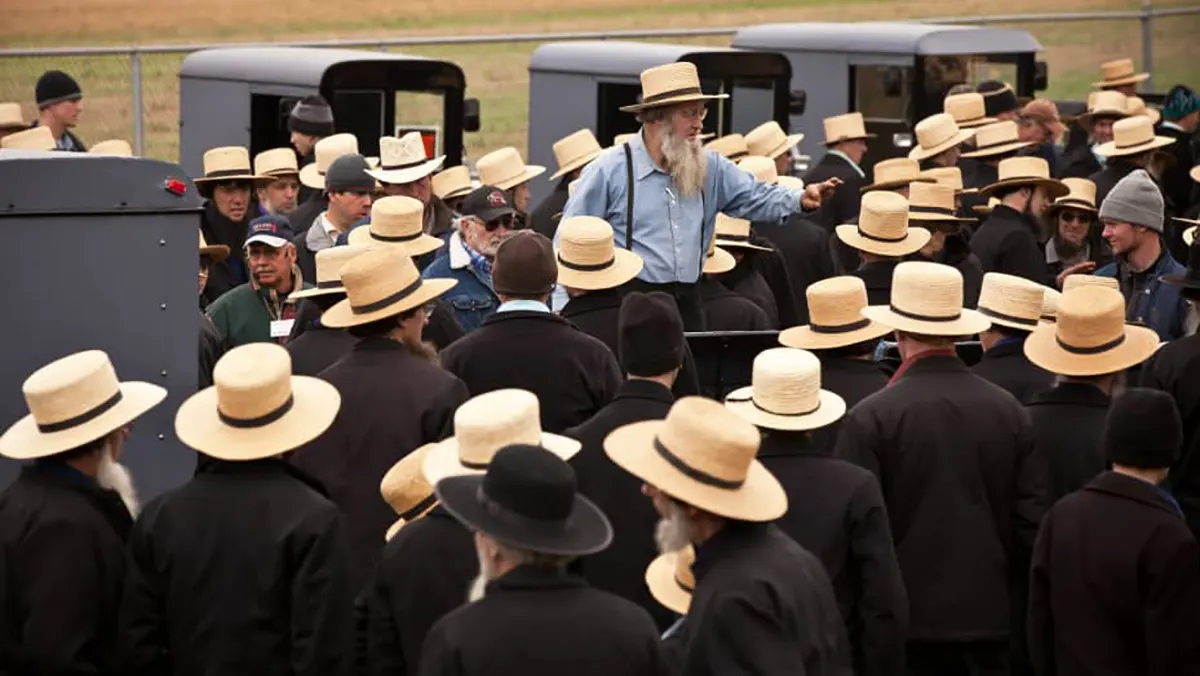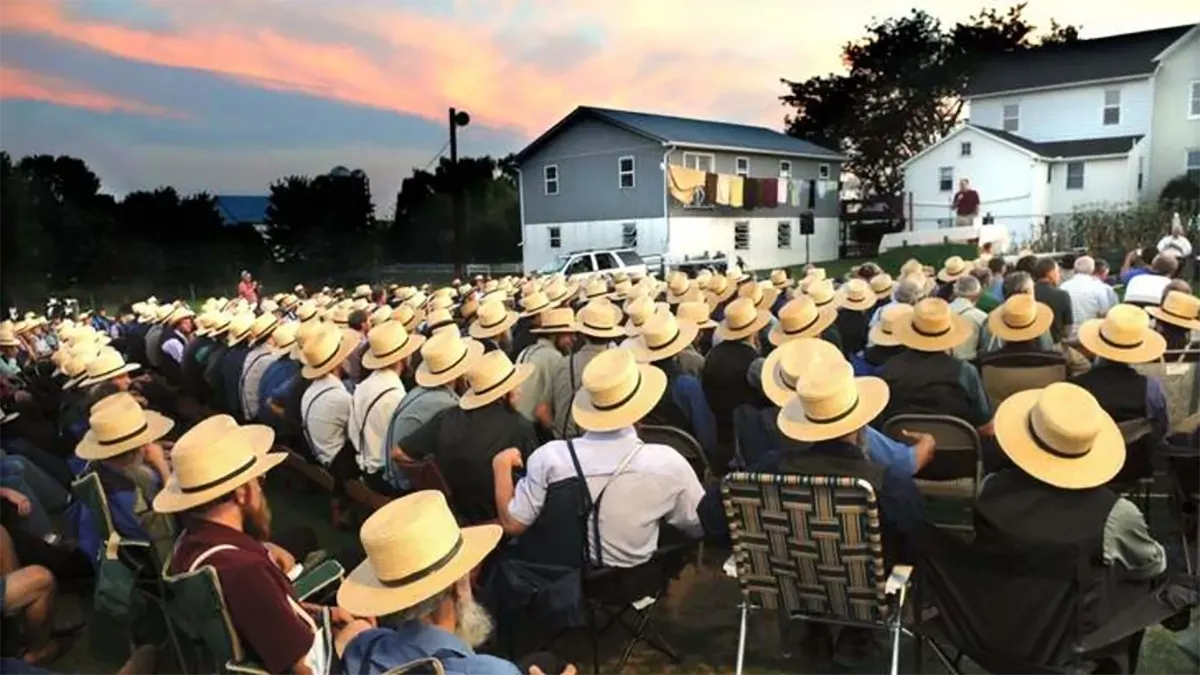In a society where conflict is ubiquitous, the Amish people have developed unique practices and beliefs to resolve disputes peacefully and constructively. From their emphasis on forgiveness and reconciliation to their use of community-based decision-making processes, the Amish approach to conflict resolution offers valuable insights for individuals and societies seeking to foster greater harmony and understanding.
When a dispute arises, the parties involved are encouraged to seek forgiveness and to work towards restoring the relationship rather than seeking retribution. In some cases, the Amish bring together a group of respected church members to discuss and resolve the issue. If anything else fails, they always have the freedom to move.
To find out more how the Amish settle differences and misunderstandings, read on.
When Conflicts Arise Within The Amish Community
In the Amish society, conflicts between members are typically resolved through a process known as “church discipline,” based on the principle of forgiveness and reconciliation.
When a dispute among the Amish, the parties involved are encouraged to speak privately to resolve the issue.
If this is unsuccessful, the matter is brought to the church leadership’s attention. The Amish bishop, the highest member of the Amish clergy, will meet with the parties involved to find a resolution.
Understanding The Meeting
This meeting is called a “church council” and typically involves the participation of church elders, bishops, and ministers who are respected community leaders.
During the council, each party can tell their side of the story and discuss their feelings and concerns. The council then works to find a solution that aligns with their religious teachings and reflects the community’s values.
If the church council can not resolve the problem, other bishops from other states and Amish communities will be called to intervene.
What Happens If the Conflict Remains Unsettled?
The worst resolution would be temporary or permanent shunning, which involves cutting off social and spiritual ties with individuals who have violated church rules or norms.
However, shunning is considered a last resort and is only used when the individual has refused to repent or make amends for their actions.
Suppose the unresolved issue involves the Amish community or church’s rules or decisions that may cause conflict with the individuals’ beliefs.
Some instances can be differences in interpretation of Ordnung, disputes over church leadership, disagreements over land use, or relationship issues. In that case, they may move away and transfer to other communities due to their non-confrontational nature.
The Amish usually believe that unwanted tension may arise anytime if they stay. They know better than to burn bridges with their neighbors.
This “moving away” factor is also considered one of the reasons why the number of Amish groups or settlements and the Amish population in the U.S. have continued to grow in recent years.
As of June 2022, the estimated population of Amish adults and children in North America is 373,620, where 62% lives in Indiana, Pennsylvania (especially Lancaster County), and Ohio.
This figure is an increase of around 12,150 since 2021 when nineteen new Amish settlements were founded and five existing settlements dissolved.
What Problems Are the Amish Facing Against the Government?
Over the years, the Amish have faced many problems and injustices from non-Amish groups or people from the outside world, their world, to be exact.
The persecution they experienced in Europe before moving to Pennsylvania, where they found refuge, was their starting point.
Fortunately, William Penn, the founder of Pennsylvania, gave the first Amish community in America a haven. His policies allowed the Amish church community to establish in Pennsylvania and live according to their beliefs and traditions.
He also granted them exemptions from military service, a significant issue for the Amish, as their religious beliefs are pacifist and prohibit them from participating in wars.
However, one of the most recent and significant issues the Amish endured was the conflict between the Amish educational approach and state compulsory education law.
Many states in the United States require all children to attend school until a certain age, and this law typically requires that the schools meet specific standards and curriculum requirements.
The Amish, however, have a different approach to learning, which emphasizes practical skills and vocational training rather than academic subjects.
Amish schools typically only go up to eighth grade, and the curriculum is based on Amish religion. The Amish prefer to teach their children at home or within the community rather than sending them to public schools.
This difference in educational approach has led to conflicts with state and local education officials, who may view the Amish educational system as inadequate or noncompliant with state laws.
The government had attempted to force the Amish to comply with state education laws, which resulted in legal battles and disputes.
One of the most crucial legal battles between the Amish and the government over schooling was the 1972 U.S. Supreme Court case of Wisconsin v. Yoder.
Because the Amish normally refuse to settle disputes in courts, they needed help defending themselves.
This case caught the interest of a Lutheran minister, Reverend William C. Lindholm, and caused him to create The National Committee for Amish Religious Freedom. The committee provided them with legal counsel.
Eventually, the Supreme Court permitted Amish parents to have a claim to refuse and remove their kids from public school after eighth grade based on their religious beliefs and culture.
This ruling recognized the importance of the Amish religious freedom and parental rights and helped protect the Amish educational approach.
How Do the Amish Deal with Them?
The Amish community values peaceful and respectful interactions with non-Amish neighbors and typically seeks to resolve conflicts or problems peacefully.
Traditionally, when the Amish faced conflicts with non-Amish people or even the government, they either gave in, refused to obey, met penalties with open arms, or moved away.
The Amish refusal to obey the government had caused a few scars on their history – some were fined, sued, and even jailed.
In the second half of the twentieth century, they realized that negotiation was the best way to resolve issues with outsiders.
Although the Amish were non-confrontational, several Amish groups knew they had to do something to protect their religious freedom and their well-preserved culture.
The Amish needed to create a national organization represented by Amish leaders from various states to articulate their views effectively on government bureaucracies.
Hence, the Amish National Steering Committee was formed. It was founded to provide a unique chance to identify environmental factors that may pressure collectivities to organize formally.
Some of the main issues that the Amish National Steering Committee handled were Social Security benefits, school issues for the Amish children, military service, health care, photo identification, property zoning, child labor, and slow-moving vehicle signs.
How do the Amish Communities Forgive?
For the Amish, no matter how complicated their concerns are with other Amish individuals or even the government, forgiveness and reconciliation are always a priority since they treat these actions as a cornerstone of their faith and community.
The Amish capability to forgive was proven in 2006 when a milk truck driver named Charles Roberts entered a one-room schoolhouse in a quiet Amish town in Nickel Mines, Pennsylvania, and shot ten young Amish girls, killing five. After committing this heinous crime, he then killed himself.
Instead of crying for justice, the victims’ families expressed forgiveness to the killer and his family right after the tragedy. They even donated money to the shooter’s widow and three young children.
According to Donald Kraybill, a sociologist at nearby Elizabethtown College, some Amish families who had just buried their daughters the day before attended the shooter’s burial. They even hugged the widow and other members of his family.
Conclusion
The Amish approach to conflict resolution emphasizes forgiveness, reconciliation, and community-based solutions.
Rather than relying on legal systems or external authorities immediately, the Amish rely on their own traditions and cultural practices to resolve conflicts within their community as their first step.
While they face their unique challenges and issues, their approach offers valuable life lessons.
Because the Amish can endure any complications and express that kind of forgiveness that may seem impossible for many non-Amish folks, they don’t hold grudges and can work on healing their pain and grief one day at a time.





